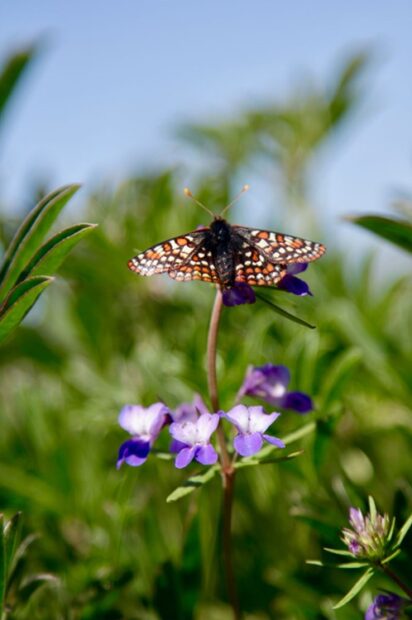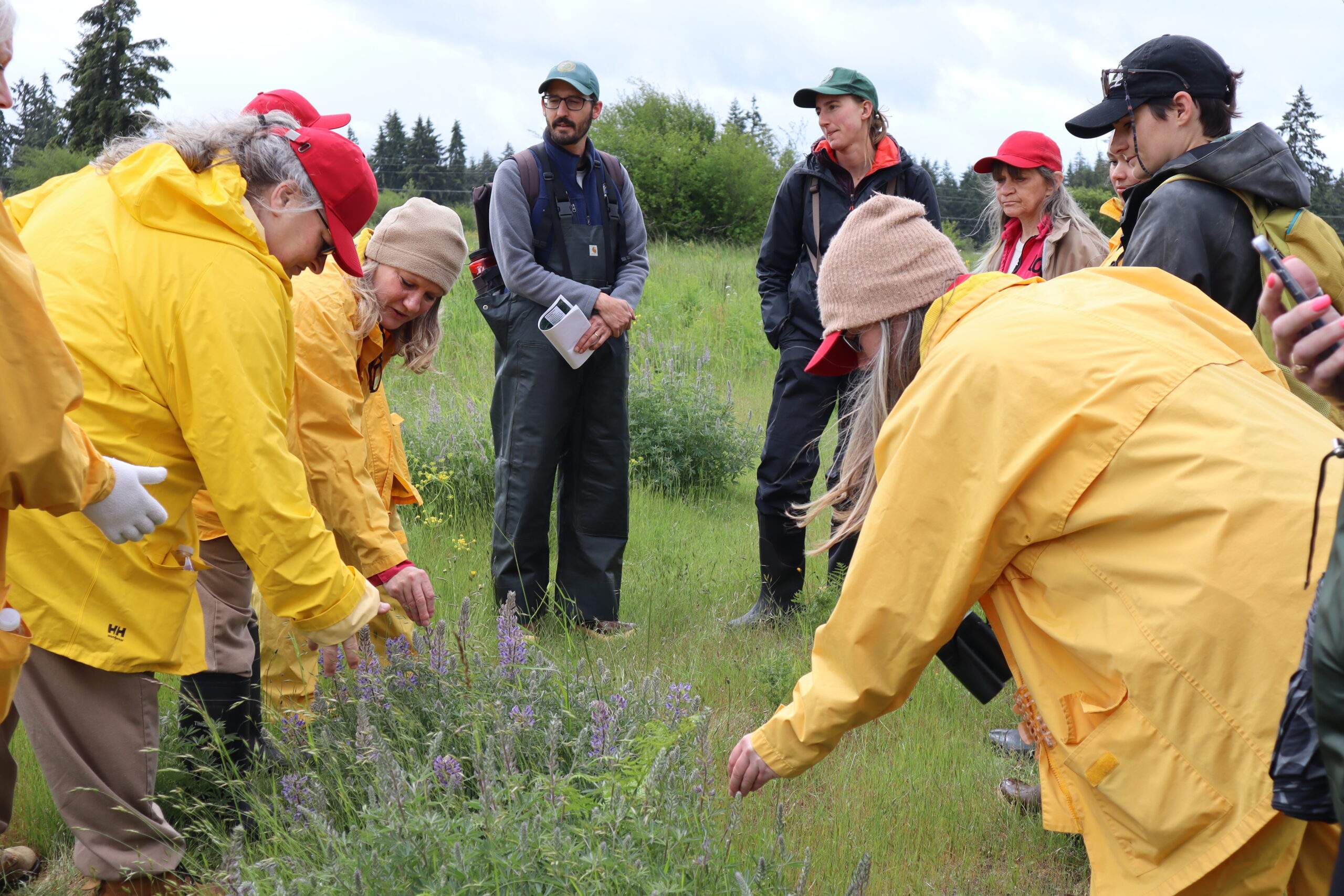By Marisa Pushee and Courtney Murphy

An adult Taylor’s checkerspot butterfly rests on a flower. Photo by Keegan Curry.
On a drizzly morning in early June, SPP program partners gathered at Scatter Creek Wildlife Area to connect and share experiences working with the federally endangered Taylor’s checkerspot butterfly (Euphydrayas editha taylori). Incarcerated butterfly technicians and Department of Corrections (DOC) professionals from Mission Creek Corrections Center for Women (MCCCW) gathered with Washington Department of Fish and Wildlife (WDFW) biologists and The Evergreen State College (TESC) staff.

With binoculars and plant ID guides in hand, the team was excited by the rich biodiversity and felt inspired to see checkerspot habitat up close. WDFW works diligently on restoration at Scatter Creek—planting native species that are critical for the Taylor’s checkerspot to use as host plants, for food, and for basking. The opportunity to see the butterflies’ prairie habitat first-hand proved an eye-opening experience for colleagues across the program. The butterfly program technicians at MCCCW work year-round to successfully rear and breed the endangered butterfly in captivity. Through their work with SPP, butterfly technicians learn extensively about prairie ecosystems. For many, this was their first opportunity to see essential native plants like paintbrush and lupine.

Many of the program technicians expressed interest in careers in restoration and environmental studies, and the field visit offered an opportunity to further grow their professional network and gain more information about working in the sciences. WDFW biologists, Andrew Dechaine and Melinda Vickers, shared with the team the diversity of careers paths that can lead to work with wildlife and provided information on upcoming job openings.


DOC Corrections professionals were also able to connect with the SPP team and learn more about the endangered butterfly that their dedicated work helps support, taking that knowledge with them to strengthen the program and support the technicians in their work. The Scatter Creek site visit provided an exciting opportunity for colleagues to build connections with one another and with the prairie habitat that the Taylor’s checkerspot butterfly calls home!